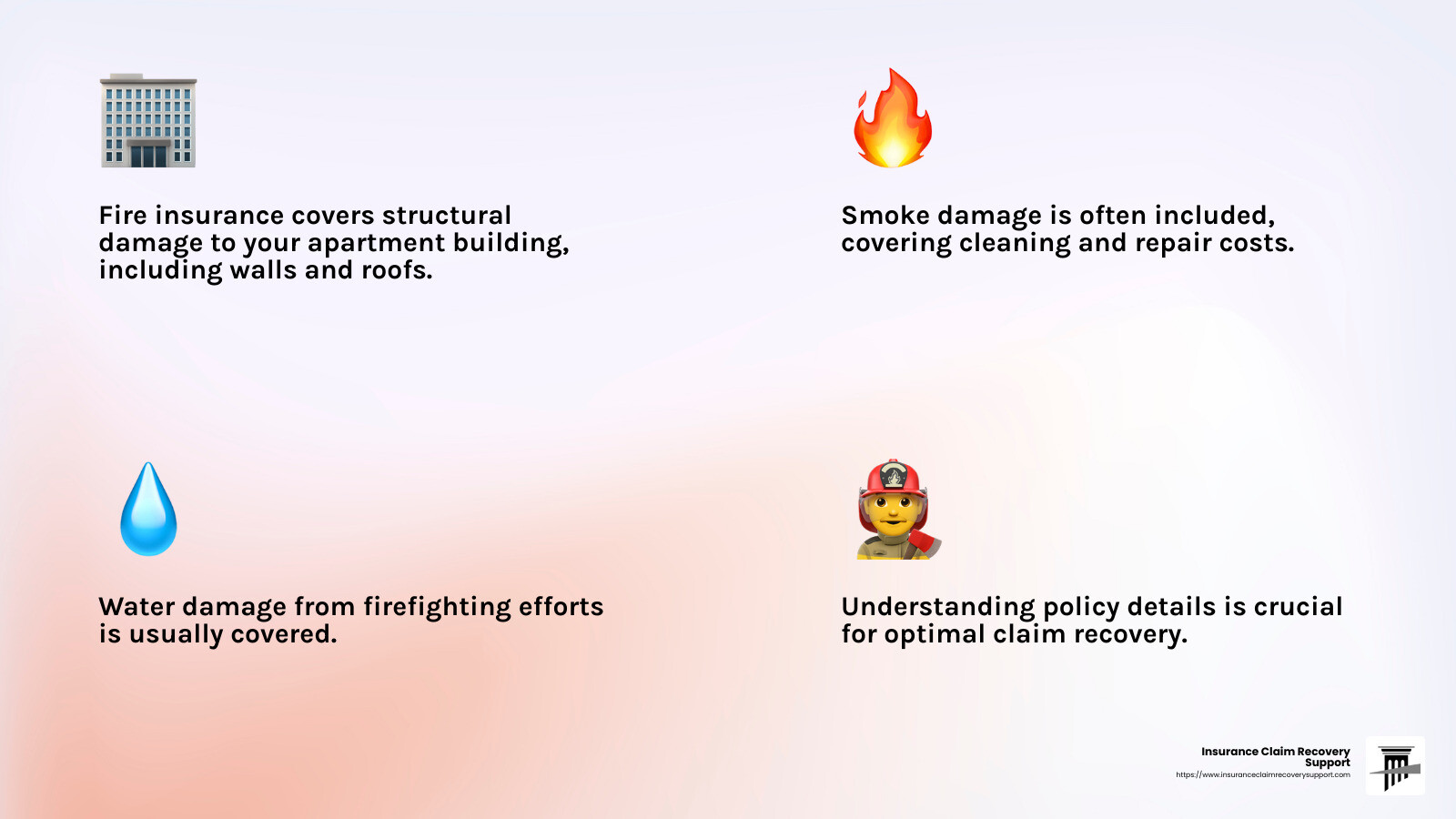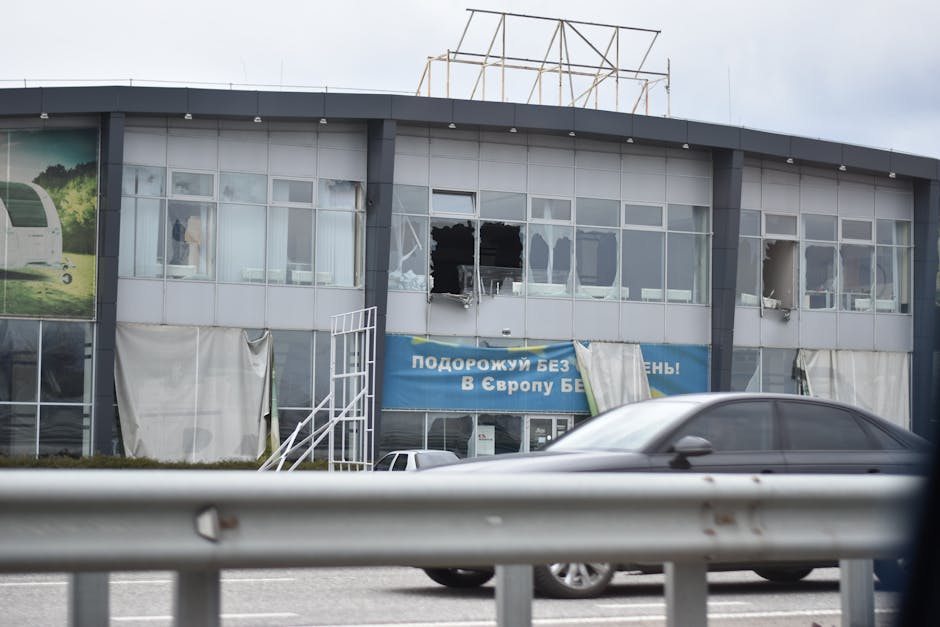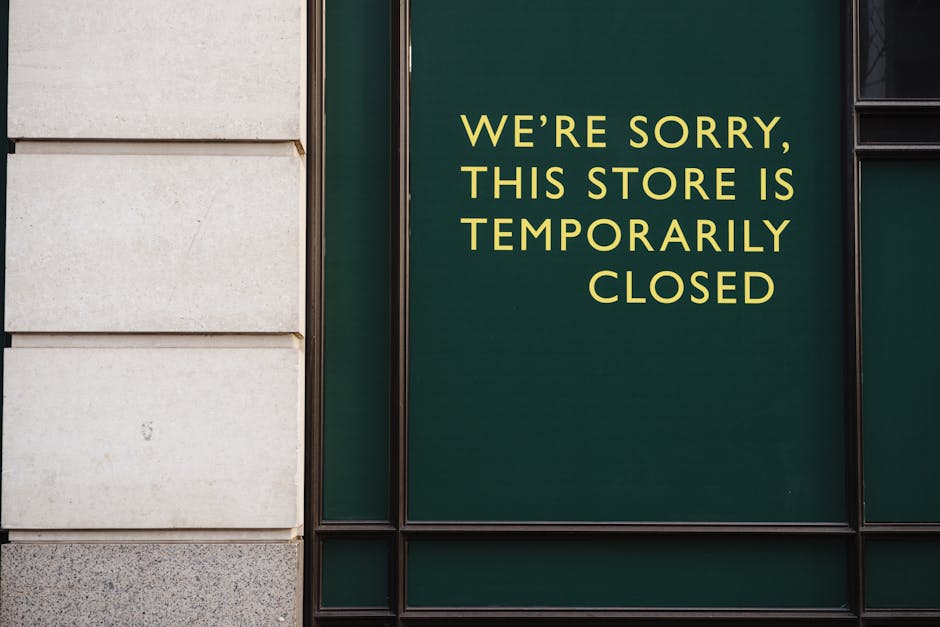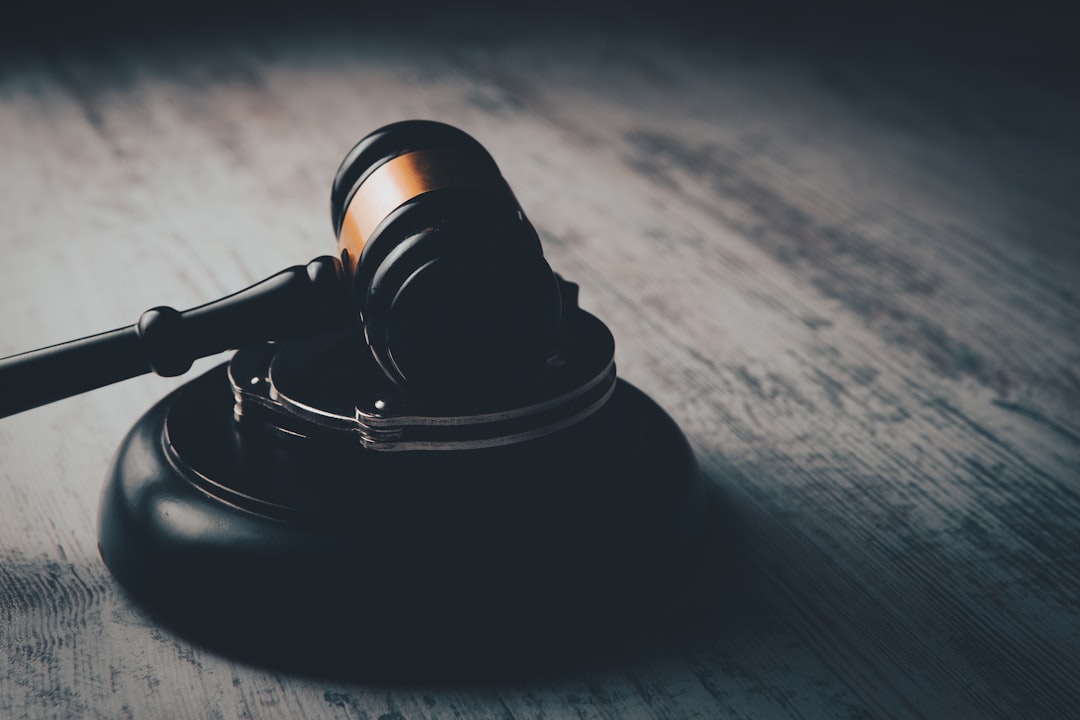Apartment fire insurance claim can be a critical lifeline for property owners left to manage the aftermath of a fire. These claims help cover the costs of rebuilding and repairing damaged structures. Handling these claims efficiently requires understanding causation and coverage. Here’s a quick breakdown:
- Identify the Fire’s Cause: Know whether it was an accident, arson, or due to negligence.
- Review Your Policy: Check if your insurance policy covers the specific cause and extent of damage.
- Document Damage: Record all evidence carefully—photos, videos, and notes of all damages.
- File Promptly: Contact your insurer immediately to initiate the claim process.
- Consult Professionals: Engage a public adjuster or legal expert if the claim is complex or denied.
Navigating the complexities of fire insurance claims can be daunting, but with the right approach, you can streamline the path to recovery.
As Scott Friedson, a seasoned expert in large loss claims, I’ve handled over 500 claims, securing significant settlements for policyholders. From this experience in apartment fire insurance claim, I can guide you through this challenging time.

Understanding Apartment Fire Insurance
Understanding your fire insurance policy is crucial for navigating the aftermath of an apartment fire. This type of insurance provides coverage for damages and losses caused by fires, helping property owners rebuild and recover. Let’s break down the key components of apartment fire insurance and what you need to know.
Fire Insurance Policy Basics
A fire insurance policy typically covers two main areas: the physical structure of the apartment complex and the contents within it. These policies aim to provide financial support for repairs and replacements, ensuring that property owners can restore their buildings to their former state.
Coverage Types:
- Structural Damage: This includes damage to the building itself, such as walls, roofs, and floors. Your policy should specify the extent of coverage for these components.
- Smoke Damage: Smoke can cause significant harm to both the structure and contents of an apartment. Coverage often includes cleaning and repairing smoke-damaged areas.
- Water Damage: While primarily a fire insurance issue, water damage from extinguishing efforts is usually covered under the same policy.

Structural Fires: Common Causes and Coverage
Structural fires in apartment complexes can stem from various sources. Understanding these can help in both prevention and claims processing:
- Kitchen Fires: The most common cause, often due to unattended cooking.
- Electrical Fires: Resulting from faulty wiring or overloaded circuits.
- Smoking-Related Fires: Caused by cigarettes or other open flames.
Each cause may affect how your claim is processed. For example, if a fire is due to a tenant’s negligence, their renters insurance might be involved in covering some costs.
What Your Policy Should Cover
It’s essential to know what your policy covers and any exclusions it might have. Generally, a comprehensive fire insurance policy will include:
- Rebuilding Costs: Funds to repair or rebuild the damaged structure.
- Loss of Rents: Compensation for lost rental income while the property is uninhabitable.
- Additional Living Expenses: Coverage for temporary accommodation if tenants are displaced.
Understanding these elements can help you ensure that your apartment fire insurance claim is processed smoothly and that you receive the full benefits you are entitled to.
In summary, a well-understood fire insurance policy is your first line of defense in the aftermath of a fire. Knowing your coverage details and the common causes of structural fires can make a significant difference in how effectively you manage and recover from such an event.
Steps to File an Apartment Fire Insurance Claim
Filing an apartment fire insurance claim can feel overwhelming, but breaking it down into clear steps can make the process more manageable. Here’s a straightforward guide to help you through it.
Document the Damage
Start by thoroughly documenting all the damage caused by the fire. This is a crucial step because the more evidence you have, the stronger your claim will be.
-
Take Photos and Videos: Capture images of all affected areas, including structural damage, smoke damage, and any belongings that were harmed.
-
Make a Detailed Inventory: List everything that was damaged or lost. Include details like the item’s description, age, and value. If you have receipts or proof of purchase, gather those too.
-
Keep Records of All Communications: Document every interaction you have with your insurance company. Note the date, time, and details of each conversation.
Secure the Property
Once the damage is documented, focus on securing your property to prevent further harm.
-
Board Up Windows and Doors: Protect your apartment from weather and potential vandalism by covering broken windows and doors.
-
Cover Roof and Other Openings: Use tarps or other materials to shield exposed areas.
-
Avoid Major Repairs: Hold off on significant repairs until after the insurance adjuster has assessed the damage. However, you can make necessary temporary fixes to prevent further damage.
File the Claim
With documentation and security measures in place, it’s time to file your claim.
-
Contact Your Insurance Company Promptly: Report the fire as soon as possible. Delays can complicate or even jeopardize your claim.
-
Provide All Necessary Documentation: Submit your photos, videos, inventory list, and any other relevant information to your insurer.
-
Follow Up Regularly: Keep in touch with your insurance company to stay updated on the progress of your claim. Be persistent but patient.
By following these steps, you’ll lay the groundwork for a successful apartment fire insurance claim. Each action you take helps ensure that you receive the compensation needed to restore your property and move forward.
Next, we’ll explore how to maximize your claim and ensure you get the best possible outcome.
Maximizing Your Apartment Fire Insurance Claim
Once you’ve filed your apartment fire insurance claim, the next step is ensuring you get the maximum settlement. Here are some strategies to help you achieve that:
Inventory: The Backbone of Your Claim
A detailed inventory is crucial. It helps your insurance company understand the extent of your losses.
-
Create a Comprehensive List: Include every damaged item, its condition, and estimated value. This is where your earlier documentation comes into play.
-
Use Receipts and Records: Attach any receipts or purchase records to your inventory list. This evidence supports your claim and speeds up the process.
-
Update Regularly: If you find additional damage or remember more items, update your list promptly.
Advance Payment: Get Immediate Help
After a fire, you might need immediate funds for temporary housing or essential repairs.
-
Request an Advance: Some insurance companies offer advance payments to help cover urgent expenses. This isn’t the final settlement; it’s a part of your total claim amount.
-
Document Your Expenses: Keep all receipts for expenses like hotel stays, meals, and temporary repairs. These will be necessary when reconciling the advance with your final claim.
Public Adjuster: Your Advocate
Navigating the claims process can be complex. A public adjuster can be a valuable ally.
-
Hire a Public Adjuster: These professionals work for you, not the insurance company. They help ensure that your claim is accurate and comprehensive.
-
Benefit from Expertise: Public adjusters understand the intricacies of insurance policies and can negotiate on your behalf. This can be especially helpful if your claim is large or if you face disputes with your insurer.
-
Maximize Your Settlement: With their experience, public adjusters can often secure a higher settlement than you might achieve on your own.
By focusing on these key areas, you can maximize your apartment fire insurance claim and ensure you’re fully compensated for your losses. Next, we’ll discuss common causes of apartment fires and how to prevent them.
Common Causes of Apartment Fires
Understanding the common causes of apartment fires is crucial for prevention and safety. Here are some of the main culprits:
Kitchen Fires
Cooking mishaps are the leading cause of apartment fires. When tenants leave food unattended on the stove or in the oven, it can quickly escalate into a fire. Grease fires, in particular, can spread rapidly. To prevent these incidents:
- Encourage tenants to stay in the kitchen while cooking.
- Provide smoke detectors and fire extinguishers in every apartment.
- Share tips on safe cooking practices, like keeping flammable items away from heat sources.
Electrical Fires
Faulty wiring and overloaded circuits are common causes of electrical fires. These fires often start behind walls, making them hard to detect until it’s too late. Aging appliances, like space heaters and clothes dryers, can also pose risks. Prevention tips include:
- Conduct regular inspections of the building’s electrical system.
- Replace old or malfunctioning appliances.
- Educate tenants on the dangers of overloading electrical outlets.
Smoking
Smoking materials, such as cigarettes, cigars, and pipes, can ignite fires if not properly extinguished. This is especially dangerous in areas with lots of fabric, like bedrooms. To minimize risks:
- Designate smoking areas outside the building.
- Provide ashtrays and educate tenants on safe disposal of smoking materials.
- Install smoke detectors and encourage tenants to use them.
By being aware of these common causes and taking preventive measures, landlords can greatly reduce the risk of fires in their apartment complexes. This not only protects the property but also ensures the safety of all tenants.
Next, we’ll address frequently asked questions about apartment fire insurance claims, covering topics like the claims process and what is typically covered in a fire insurance policy.
Frequently Asked Questions about Apartment Fire Insurance Claims
How does a fire insurance claim work?
When an apartment fire occurs, the claims process begins with immediate action. First, ensure everyone’s safety and contact emergency services. Once the fire is extinguished, secure the property to prevent further damage. Then, promptly notify your insurance company to initiate the claim.
An insurance adjuster will be sent to inspect the damage. They assess the extent of the fire and smoke damage to determine the claim’s value. It’s crucial to document everything with photos and receipts and to be present during the adjuster’s visit to provide any necessary information.
Does renters insurance cover fire damage to the apartment?
Renters insurance typically covers personal belongings damaged by fire, such as clothing, electronics, and furniture. It may also cover loss of use, providing funds for temporary housing if the apartment is uninhabitable.
However, renters insurance does not cover the structure of the apartment itself—that’s the landlord’s responsibility. Landlords should have their own insurance to cover structural repairs. It’s essential for tenants to understand their policy details and ensure they have adequate coverage for their personal property.
What is covered in a fire insurance policy?
A standard fire insurance policy for landlords usually covers fire damage to the building’s structure, including walls, roofs, and floors. It also often includes coverage for smoke damage, which can affect areas not directly touched by flames.
Policies may also cover costs related to restoring the property to its pre-fire condition. However, read your specific policy carefully, as coverage can vary significantly. Some policies might exclude certain types of damage or have specific conditions for coverage.
Understanding these aspects of your fire insurance policy can help ensure you’re adequately prepared in the unfortunate event of a fire.
By knowing how the claims process works and what is typically covered, both landlords and tenants can steer the aftermath of a fire more effectively. Next, we’ll conclude with insights into policyholder advocacy and the support available in various Texas locations.
Conclusion
Navigating an Apartment fire insurance claim can be complex and stressful, but you don’t have to do it alone. At Insurance Claim Recovery Support, we are dedicated to being your advocate throughout the claims process. Our mission is to ensure that policyholders receive the maximum settlement they deserve, reflecting the true value of their losses.
With our headquarters in Texas, we serve a wide range of locations including Austin, Dallas-Fort Worth, San Antonio, Houston, Lubbock, San Angelo, and beyond. Our team of expert public adjusters is committed to providing personalized support, whether you’re dealing with the aftermath of a fire, hail, hurricane, or other property damage.
We understand that each claim is unique, and our approach is custom to meet your specific needs. Our deep knowledge of insurance policies and our strategic approach to claims handling set us apart. We carefully document all damages, negotiate with insurers, and strive to secure the best possible outcome for you.
In times of distress, having a reliable partner can make all the difference. Let us help you steer the intricacies of your fire insurance claim and ensure that your rights as a policyholder are protected. For more information on how we can assist with your multifamily insurance claims, visit our Multi-Family Insurance Claims Process page.
Our commitment to policyholder advocacy is unwavering, and our presence across Texas ensures that expert help is always within reach. Choose Insurance Claim Recovery Support as your ally in the journey to recovery.






